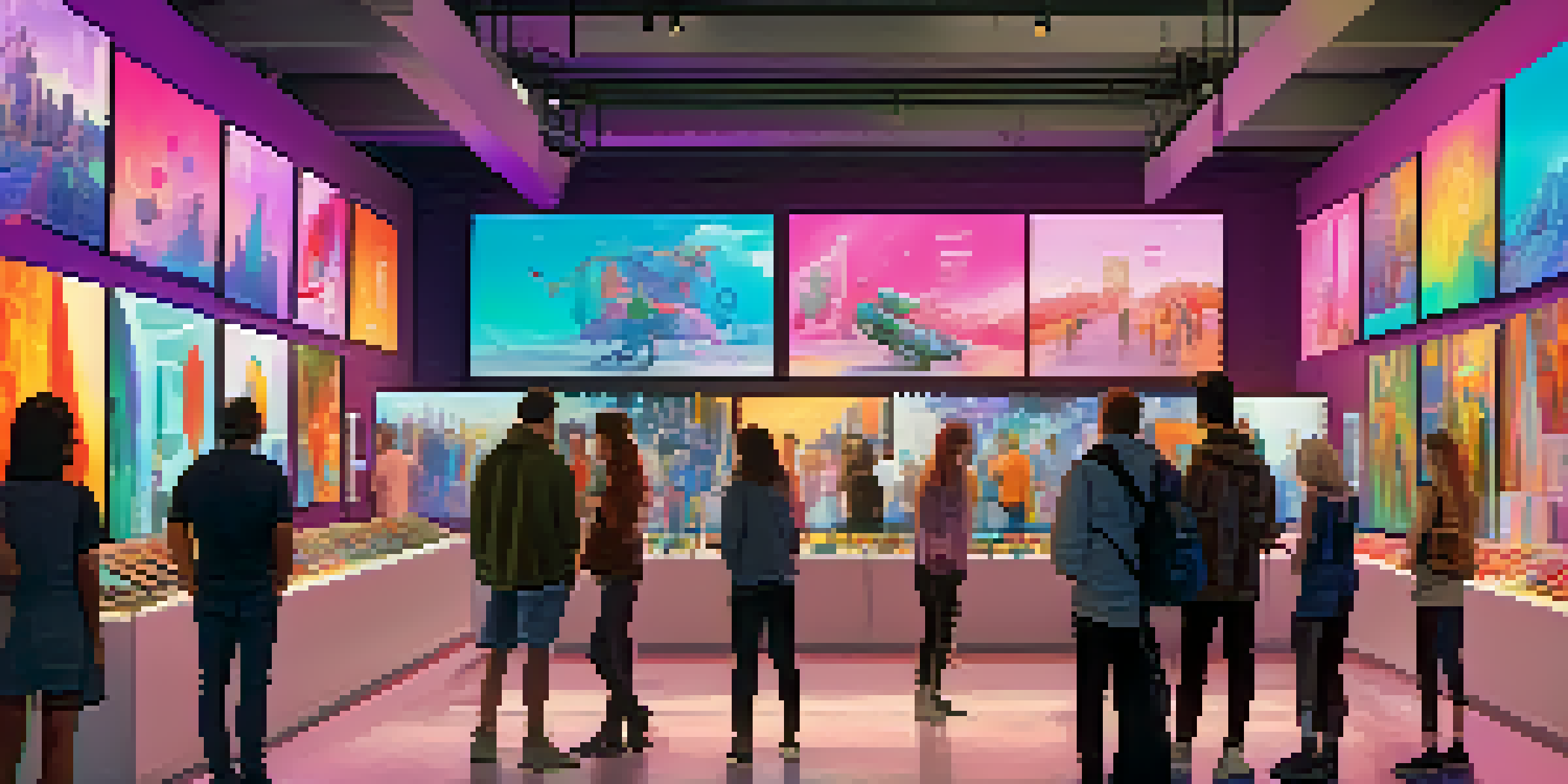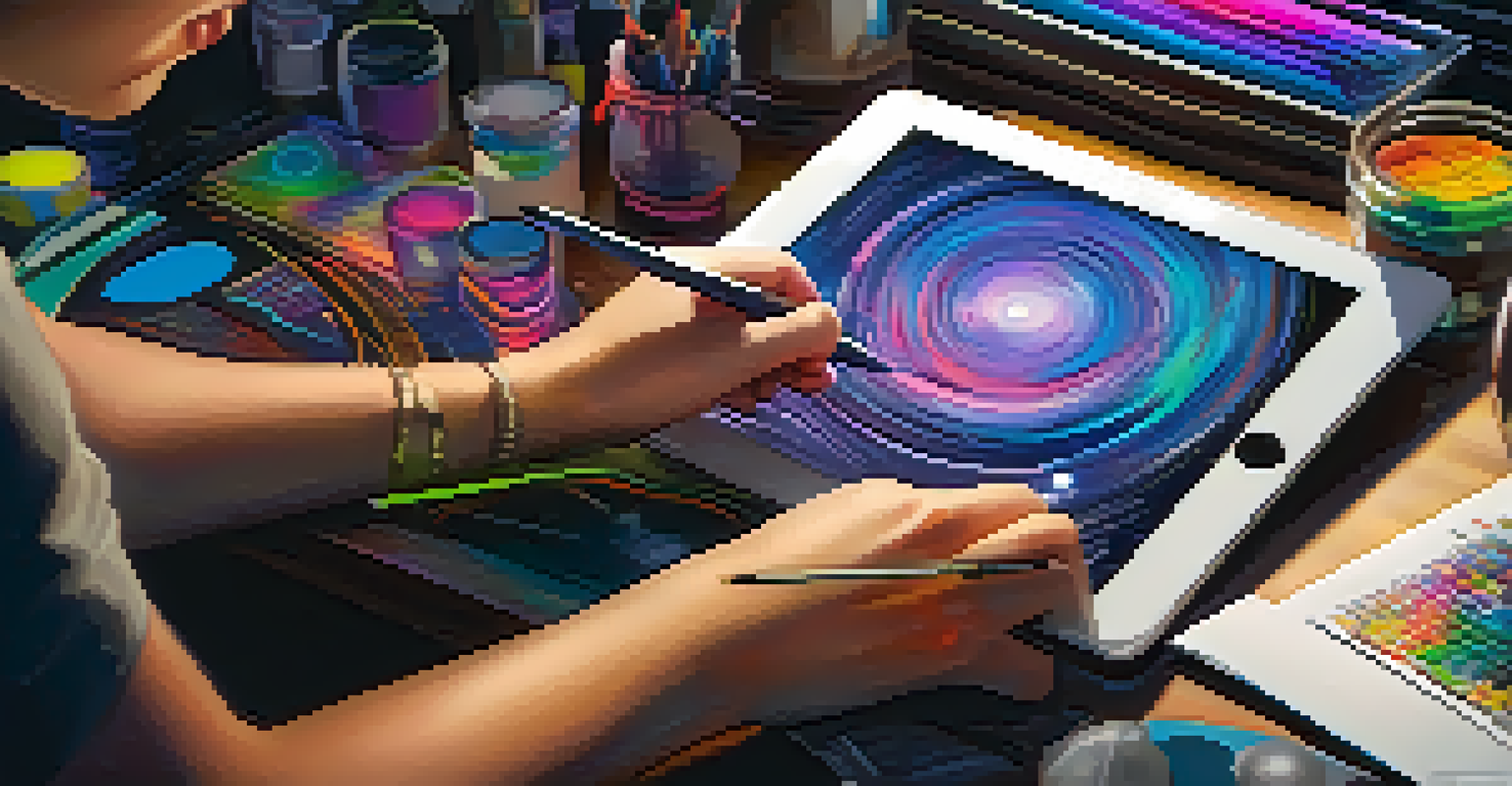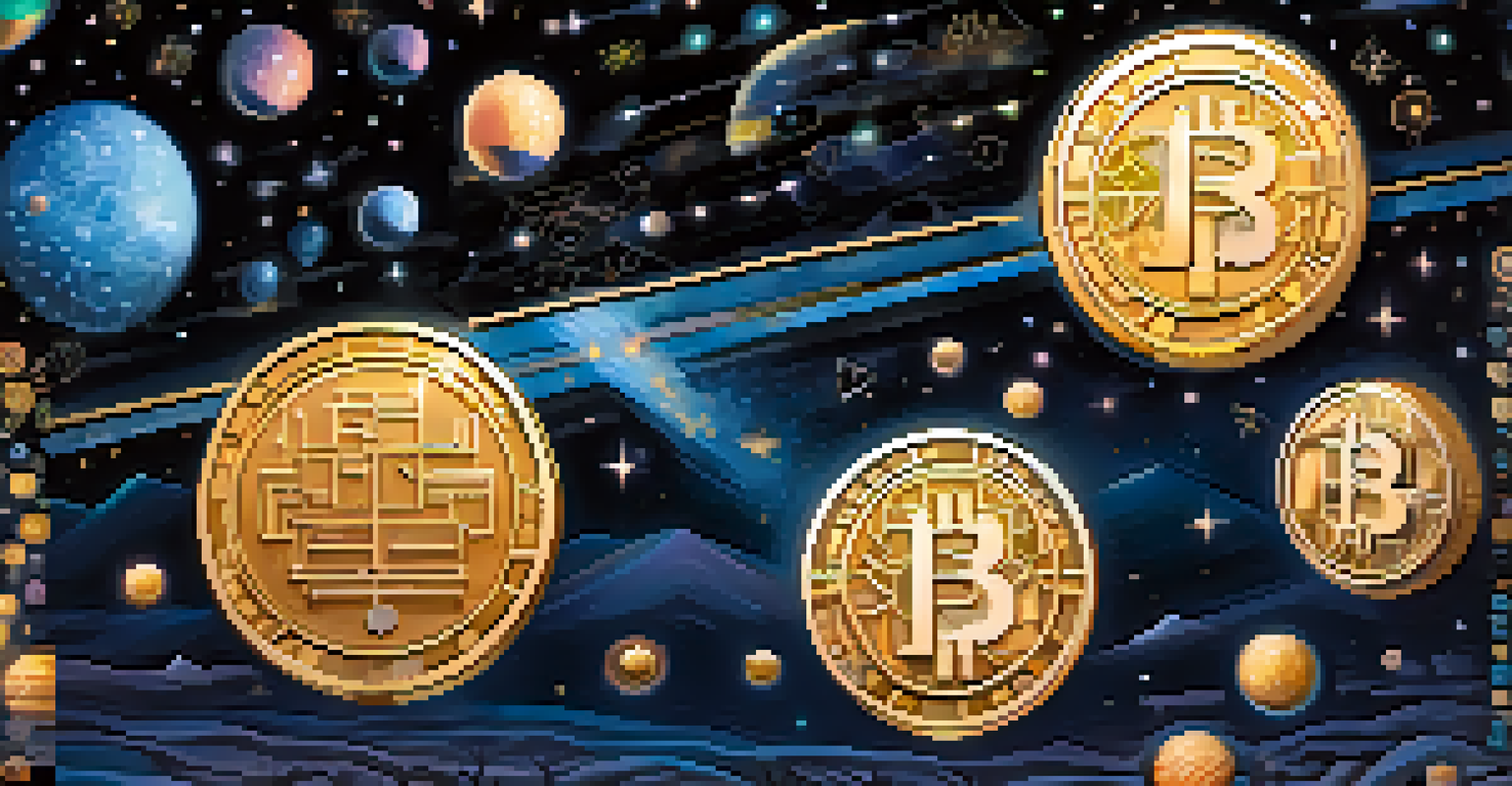The Impact of NFTs on Digital Art Sales in E-Commerce

Understanding NFTs: The New Digital Frontier
NFTs, or Non-Fungible Tokens, represent unique digital assets verified using blockchain technology. Unlike cryptocurrencies, which are interchangeable, NFTs can signify ownership of a specific item, such as a piece of digital art. This uniqueness is what makes NFTs a game-changer for artists and collectors alike.
NFTs are a way to prove ownership of a digital asset, giving artists the ability to sell their work on their own terms.
In the context of digital art, NFTs allow artists to sell their work in a way that ensures authenticity and provenance. Each NFT is linked to a digital file, which can include anything from paintings to music, providing a new revenue stream for creators. This shift is particularly important in an era where digital art was often easily replicated without compensation for the artist.
As e-commerce continues to grow, understanding NFTs is crucial for artists looking to navigate this landscape. By embracing this technology, artists can reach a global audience and retain more control over their work. The potential for increased visibility and sales is significant in this evolving market.
The Rise of NFT Marketplaces for Digital Art
NFT marketplaces have sprung up, providing platforms for artists to showcase and sell their work directly to buyers. Popular platforms like OpenSea and Rarible have made it easier for anyone to enter the digital art space. These marketplaces function similarly to traditional e-commerce sites, but with the added benefit of blockchain verification.

Through these marketplaces, artists can reach a broader audience without intermediaries, meaning they keep a larger share of the profits. Buyers also benefit from the transparency of transactions, knowing that their purchases are securely recorded on the blockchain. This creates a trust that is often lacking in traditional art sales.
NFTs Empower Digital Artists
NFTs enable artists to sell unique digital creations, ensuring authenticity and providing a new revenue stream.
Moreover, the rise of these platforms has led to a democratization of art sales, allowing emerging artists to gain recognition alongside established names. This shift is fostering a vibrant community of creators and collectors, all eager to explore the possibilities that NFTs offer.
How NFTs Change the Perception of Digital Art
Traditionally, digital art was often undervalued compared to physical art forms. However, the introduction of NFTs is changing that narrative. By establishing a clear ownership structure, NFTs validate the value of digital creations, allowing artists to command prices that reflect their work's uniqueness and creativity.
The art world is changing. Digital art and NFTs are giving artists a new way to monetize their creativity.
This newfound recognition is crucial for artists who have struggled to monetize their digital creations in the past. With NFTs, artists can now sell their work for significant amounts, which helps elevate the status of digital art within the broader art community. It's a shift that challenges preconceived notions about what constitutes 'real' art.
As more collectors and investors enter the NFT space, the perception of digital art continues to evolve. This evolution not only benefits artists but also enriches the cultural landscape, encouraging innovation and experimentation in digital artistry.
The Economic Implications of NFTs for Artists
NFTs offer artists a new economic model that goes beyond one-time sales. Many platforms allow creators to earn royalties on secondary sales, meaning they can profit every time their artwork is resold. This is a significant shift from traditional art sales, where artists typically do not see any revenue from future transactions.
This ongoing revenue stream can provide financial stability for artists, enabling them to focus more on their craft and less on marketing. It's a win-win situation that not only incentivizes creators but also encourages collectors to invest in digital art, knowing they are supporting artists directly.
Marketplaces Democratize Art Sales
NFT marketplaces allow artists to reach broader audiences while retaining more profits, fostering a vibrant community.
Moreover, the NFT market's rapid growth has led to increased investment and interest in digital art as a whole. This economic shift is paving the way for new opportunities, allowing artists to collaborate, innovate, and thrive in an ever-expanding digital landscape.
Challenges Facing Artists in the NFT Space
Despite the opportunities, artists face several challenges when entering the NFT space. One significant hurdle is the environmental impact associated with blockchain technology. The energy consumption of some blockchain networks has raised concerns about sustainability, prompting artists to consider the implications of their choices.
Additionally, the NFT market can be volatile, with prices fluctuating dramatically. This uncertainty can be daunting for artists who rely on consistent income from their work. Artists must navigate this unpredictable landscape while staying true to their creative vision.
Finally, the saturation of the market poses another challenge. As more artists enter the NFT space, standing out becomes increasingly difficult. To succeed, artists must focus on building their brand and community, ensuring their work resonates with collectors.
The Role of Social Media in Promoting NFTs
Social media has become a powerful tool for artists to promote their NFTs and connect with potential buyers. Platforms like Twitter, Instagram, and TikTok allow artists to showcase their work, share their stories, and engage with audiences directly. This level of interaction can lead to increased visibility and sales.
Through social media, artists can cultivate a personal brand, establishing themselves within the NFT community. This engagement not only helps in selling art but also fosters a sense of community among creators and collectors. Fans can follow their favorite artists' journeys and feel more invested in their work.
Social Media Boosts NFT Visibility
Social media serves as a vital platform for artists to promote their NFTs and engage with potential buyers.
Moreover, social media often serves as a platform for discussions about the value and meaning of digital art. These conversations can help shape the market and influence trends, making social media an essential component of an artist's marketing strategy in the NFT realm.
Looking Ahead: The Future of NFTs and Digital Art
As the NFT landscape continues to evolve, the future of digital art sales looks promising. Innovations in technology and a growing acceptance of NFTs indicate that this trend is here to stay. Artists are likely to experiment with new formats and concepts, pushing the boundaries of what digital art can be.
Furthermore, as more brands and businesses explore NFTs, we can expect to see an increased integration of digital art into mainstream culture. This could open up new avenues for collaboration between artists and brands, creating unique opportunities for exposure and revenue.

Ultimately, the impact of NFTs on digital art sales in e-commerce is just beginning. With ongoing developments in the space, artists and collectors alike will continue to navigate this exciting frontier, shaping the future of art in the digital age.